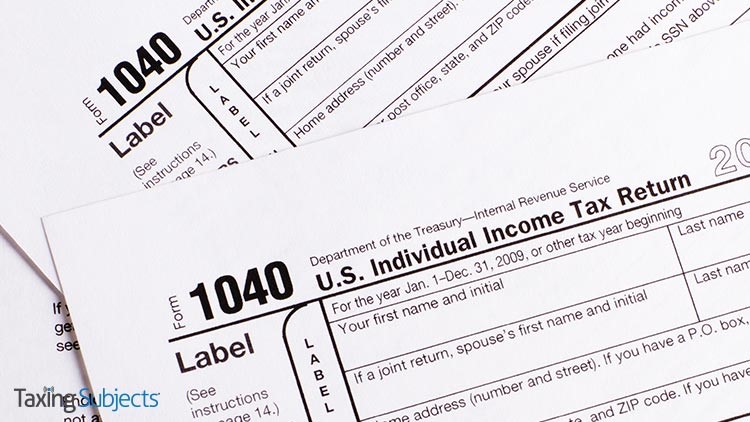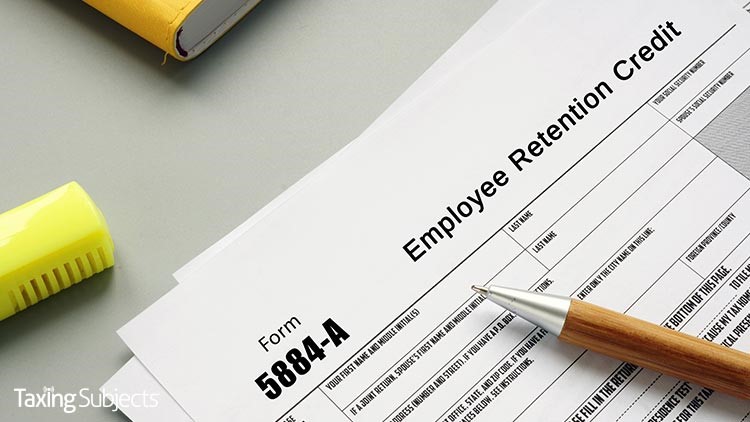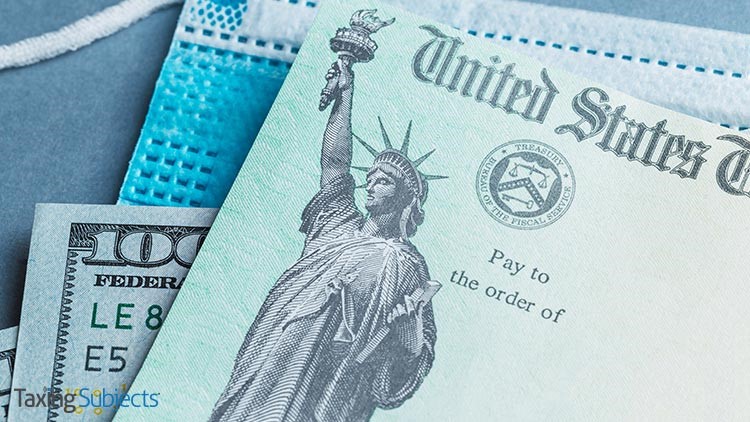by MEA Tax Advisors | Apr 30, 2021 | Tax Tips and News
This tax season, like so many before, a lot of filers could use a little extra time to get the job done. And while it’s true that anyone can request an extension of time to file beyond this year’s May 17 deadline, some taxpayers don’t even have to ask in order to have more time to file.
According to the IRS, over 16 million filers will get an extension “by filing a form or making an electronic payment.” But at least three groups won’t have to do anything to receive additional time to file.
Here’s a breakdown.
Winter Storm Disaster Victims
Old Man Winter did his worst to residents of Texas, Louisiana and Oklahoma recently. Because of near- and sub-zero temperatures, snowfall and other record conditions, portions of the three states were declared federal disaster areas.
Residents of any county within a federally declared disaster area in any one of the three states is entitled automatically to an extension of time to file, putting their tax returns due on June 15. This date applies to filing returns and paying any tax due.
For disaster victims in an area qualified for FEMA’s Individual Assistance program, there’s no need to contact the IRS to qualify. All the applicable extensions and other disaster-related relief are applied, based on the taxpayer’s address of record on file with the IRS.
This relief includes more time for making contributions to IRAs and other retirement plans for the 2020 tax year, and making estimated tax payments for 2021.
Relief is also available to those living outside the disaster area in certain circumstances.
For example, these taxpayers might live outside the disaster area but have a business within the disaster area, have tax records within the disaster area or are assisting in disaster relief efforts.
Check out the Around the Nation page on IRS.gov for details on all available relief.
Taxpayers in a Combat Zone
The Internal Revenue Service gives soldiers and eligible support personnel who are serving in a combat zone at least 180 days after they leave the combat zone to file tax returns and pay any tax due. Publication 3, Armed Forces’ Tax Guide, has a complete list of designated combat zone locations.
Military and support taxpayers in combat zones also have more time for other tax-related functions, such as making contributions to an IRA. Since various circumstances can affect what extensions are available to an individual, refer to Publication 3 for guidance.
Taxpayers Living Outside the U.S.
U.S. citizens and resident aliens living and working outside the U.S. and Puerto Rico also get a break on the filing deadline. They have until June 15 to file their 2020 returns and pay any tax due.
The June 15 deadline also applies to U.S. military forces on duty outside the U.S. and Puerto Rico, but who are not serving in a combat zone. The IRS recommends taxpayers include a statement with their tax return explaining which situation applies to them.
Taxpayers abroad should note that while they get an extension of time to file and pay, there’s a penalty for late payments. Interest will be charged at 3 percent per year, compounded daily, to payments received after the May 17 deadline.
Publication 54, Tax Guide for U.S. Citizens and Resident Aliens Abroad, has more information on special rules for U.S. taxpayers living outside the country.
Other Taxpayers
The usual method for obtaining an automatic extension still applies for taxpayers who aren’t in these three special groups is to simply submit a request for an automatic extension to extend a taxpayer’s filing deadline until Oct. 15. (Payment of any tax due, of course, is still due by May 17.)
Other than filing Form 4868 to request an extension, taxpayers can pay their tax due electronically to get an extension to file. Online payment sites like Direct Pay or the Electronic Federal Tax Payment System (EFTPS) can be used, as well as debit or credit cards.
Check out all the payment options at IRS.gov/payments.
Source: IR-2021-96
– Story provided by TaxingSubjects.com
by MEA Tax Advisors | Apr 29, 2021 | Tax Tips and News
The Internal Revenue Service has kept taxpayers’ mailboxes busy for months now, sending out notices to taxpayers about the various Economic Impact Payments that have been issued.
The agency was required to mail a notice to the last known address of each Economic Impact Payment (EIP) recipient every time a new EIP was issued. So, it’s a fair bet to say many tax professionals have had more than one question about what these notices mean to the average taxpayer and what to do with them, so we thought a little explanation was in order.
What is in the EIP notices?
Every time there’s a new Economic Impact Payment, the IRS has to send out an accompanying notice, telling potential recipients about the amount of the payment, how it was paid out, and how to report a payment that wasn’t received.
Some people may get more than one notice for the same EIP. Most, hopefully, will simply hang onto the notice until it’s time to file their return. Here’s a look at each notice that taxpayers could have received:
Notice 1444, Your Economic Impact Payment. This was the very first notice for an EIP, sent out just 15 days after the first payment was issued in 2020. If the IRS corrected the amount of the first payment, or sent out more than one payment to a recipient, they would have gotten another notice.
Those who got a Notice 1444 but not the first EIP should check the frequently asked questions on the IRS website, looking for instructions on what to do if the first payment is lost, stolen, destroyed or has not been received. Recipients should keep this letter with their records for the 2020 tax year.
Notice 1444-A, You May Need to Act to Claim Your Payment. This letter was sent out in 2020, aimed at individuals who usually aren’t required to file a federal income tax return but could have been qualified to get the first Economic Impact Payment.
Those who didn’t get the first and second EIPs—or got less than the full amounts—may still be able to claim the 2020 Recovery Rebate Credit. However, they’ll have to file a 2020 return to get the credit, even if they usually aren’t required to file.
Notice 1444-B, Your Second Economic Impact Payment. This notice fell victim to timing set in motion by the legislation that authorized the second EIP. The law gave the IRS more time to mail this notice after the second payment was issued, meaning recipients got their second Economic Impact Payments several weeks before Notice 1444-B was delivered.
If a taxpayer got Notice 1444-B but didn’t get the second EIP, they should read the FAQs about what to do if the second payment had not been received.
Notice 1444-B should be kept with the taxpayer’s tax year 2020 records.
Notice 1444-C, Your 2021 Economic Impact Payment. This is the latest in the series; the IRS is still in the process of mailing it to those who received the third EIP.
Recipients should keep Notice 1444-C with their tax year 2021 records.
The IRS says it’s a good rule of thumb to keep any of its notices about Economic Impact Payments with other tax records, since the agency can’t issue replacement copies.
Taxpayers who don’t have their notices, though, can still see their Economic Impact Payment amounts using their online account.
For more information, see the do’s and don’t for taxpayers who get a letter or notice from the IRS and the Get My Payment tool on IRS.gov.
Source: COVID Tax Tip 2021-58
– Story provided by TaxingSubjects.com
by MEA Tax Advisors | Apr 21, 2021 | Tax Tips and News
The Internal Revenue Service has issued guidance aimed at employers who claim the employee retention credit (ERC).
The ERC was created by the Coronavirus Aid, Relief, and Economic Security Act (CARES Act), but its terms were changed by subsequent legislation. The changes applying to the first and second quarter of this year are laid out in IRS Notice 2021-23.
The alterations include:
- the increase in the maximum credit amount
- the expansion of the category of employers that may be eligible to claim the credit
- modifications to the gross receipts test
- revisions to the definition of qualified wages
- new limits on the ability of eligible employers to request an advance payment of the credit
The IRS reminds that the ERC is a refundable credit that can be claimed by eligible employers against their share of Social Security tax. That share will equal 70% of the qualified wages the employer paid to employees from Dec. 31, 2020, through June 30, 2021.
Language in the CARES Act—and later modified by the Taxpayer Certainty and Disaster Tax Relief Act of 2020—sets the limit on qualified wages at “$10,000 per worker per calendar quarter in 2021.” That means the employee retention credit is capped at “$7,000 per employee per quarter,” or “$14,000 total for the first two quarters of 2021.”
Claiming the Employee Retention Credit
The IRS says that small employers can still request an advance on the ERC in 2021, though larger employers cannot. Here’s one way that process can work:
“Small employers may request advance payment of the credit on Form 7200, Advance of Employer Credits Due to COVID-19 after reducing deposits,” the IRS explains. “[Though] some limits and eligibility requirements apply.”
Notice 2021-23 has instructions for calculating and claiming the employee retention credit in Q1 and Q2 of this year. However, guidance for the rest of 2021 is still in the works, so stay tuned for new guidance from the IRS and the Department of the Treasury.
Sources: Claiming the employee retention credit in the first and second calendar quarters 2021; Notice 2021-23.
– Story provided by TaxingSubjects.com
by MEA Tax Advisors | Apr 17, 2021 | Tax Tips and News
The Internal Revenue Service continues to send out Economic Impact Payments (EIPs), aimed at helping Americans though these tough economic times. But how can the agency fulfill its mission if the citizens who need the help most—the homeless and the rural poor—don’t have permanent addresses?
The IRS is relying on a team approach to tackle the problem.
People in these under-served groups may be eligible for an EIP—but they can’t be issued a payment when the IRS doesn’t have their information. So, the agency is asking “community groups, employers, and others to share information about Economic Impact Payments and help more eligible people file a tax return so they can receive everything they’re entitled to.”
IRS Commissioner Chuck Retting says his agency is working “directly with groups inside and outside the tax community to get information directly to people experiencing homelessness and other groups to help them receive Economic Impact Payments.”
People can get Economic Impact Payments even if they have little or no income and even if they don’t usually file a tax return. They do, however, need a Social Security Number and cannot be claimed as a dependent by another taxpayer.
IRS wants to fill in the blanks
The IRS says the only way it can get the information it needs to send out an EIP is from a basic 2020 federal tax return. When a return is processed, the IRS can then send stimulus payments to the address of choice selected by the filer.
“Someone experiencing homelessness may list the address of a friend, relative or trusted service provider, such as a shelter, drop-in day center or transitional housing program, on the return filed with the IRS,” the agency explains. “If they are unable to choose direct deposit, a check or debit card for the tax refund and the third Economic Impact Payment can then be mailed to this address.”
In addition to EIP3, the IRS says those without a permanent address can qualify for other tax credits—like the Earned Income Tax Credit—and even EIP1 and EIP2 when filing a 2020 return.
To get their share of those two earlier direct payments, the filer needs to claim the Recovery Rebate Credit. For those who are unfamiliar with the RRC, the IRS has a webpage dedicated to it: Claiming the 2020 Recovery Rebate Credit if you aren’t required to file a tax return.
As for the EITC, the IRS says their EITC Assistant can help homeless workers determine whether they qualify and estimate its value.
Getting a bank account isn’t required
While a bank account isn’t required to receive an Economic Impact Payment, having an account does enable a filer to get their EIP direct deposited.
The Federal Deposit Insurance Corporation (FDIC) website has details on opening an account online. Other resources with lists of banks and credit unions that can open an account online include:
The IRS also notes that veterans can use the Veterans Benefits Banking Program (VBBP) “for access to financial services at participating banks.”
Filers with a prepaid debit card may also be able to have their refund sent to their card account. Cardholders need to check with the institution that issued the card to find out if the card can be used and to get the routing and account numbers, which could be different from the card number.
Other resources for employers
The IRS issued this latest press release to “help spread the word” to those who could use this financial boost the most. To make it easier for employers to provide employees with information about the Earned Income Tax Credit, they created an outreach material packet that is available on their site: EITC.IRS.gov/Partner-Toolkit/Employers/Employers.
Sources: Those experiencing homelessness can get Economic Impact Payments and other tax benefits; Claiming the Recovery Rebate Credit if you aren’t required to file a tax return
– Story provided by TaxingSubjects.com
by MEA Tax Advisors | Apr 10, 2021 | Tax Tips and News
The IRS has unveiled guidance that temporarily throws open the gates to recouping 100 percent of the expense for certain food and beverage purchases. The new rules for this business deduction went into effect on Jan.1 of this year.
The guidance is spelled out in Notice 2021-25, which addresses changes set out in the Taxpayer Certainty and Disaster Relief Act of 2020. The new law created an exception to the usual 50 percent amount that businesses can claim as a food and beverage business expense.
The notice lays out the conditions that qualify for the temporary deduction. Purchases are eligible between Jan. 1, 2021, and Dec. 31, 2022, and the owner of the business—or an employee—has to be present when the food or beverages are served.
The Notice includes other restrictions as well:
“For this purpose, the term ‘restaurant’ means a business that prepares and sells food or beverages to retail customers for immediate consumption, regardless of whether the food or beverages are consumed on the business’s premises.
“However, a restaurant does not include a business that primarily sells pre-packaged food or beverages not for immediate consumption, such as a grocery store; specialty food store; beer, wine, or liquor store; drug store; convenience store; newsstand; or a vending machine or kiosk.”
And just to make sure those business lunches don’t get too fancy, the IRS states in the release that “the expense can’t be lavish or extravagant under the circumstances.”
The notice also states that “any eating facility located on the business premises of the employer and used in furnishing meals excluded from an employee’s gross income” or an employer-operated eating facility that’s treated as a fringe benefit doesn’t qualify for the higher deduction rate—even if it’s run by a third-party contractor.
Any claims for the deduction, the notice stipulates, have to include documentation showing the cost of the food or beverages separate from the costs of any entertainment.
Check out the IRS website, IRS.gov, for more information on businesses seeking coronavirus-related tax relief.
Sources: Treasury, IRS provide guidance on tax relief for deductions for food or beverages from restaurants; Temporary 100-Percent Deduction for Business Meal Expenses.
– Story provided by TaxingSubjects.com





